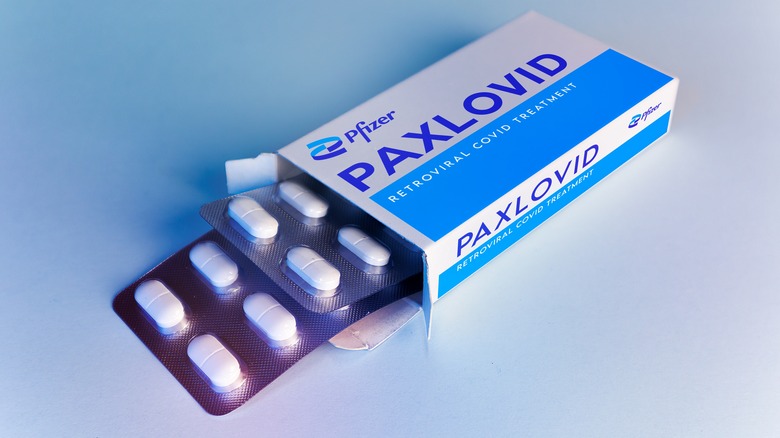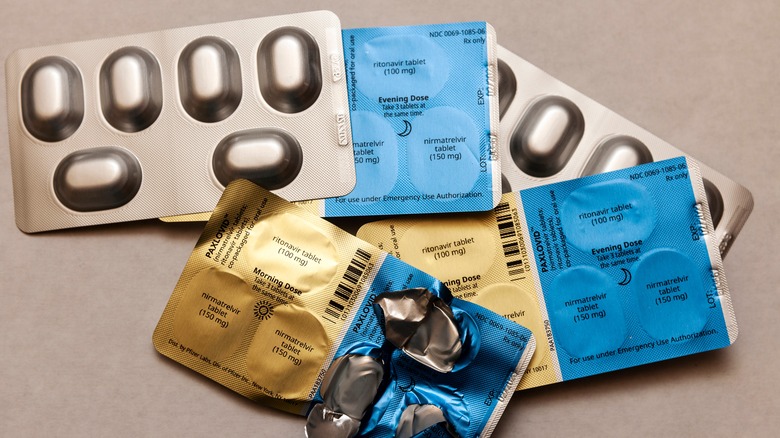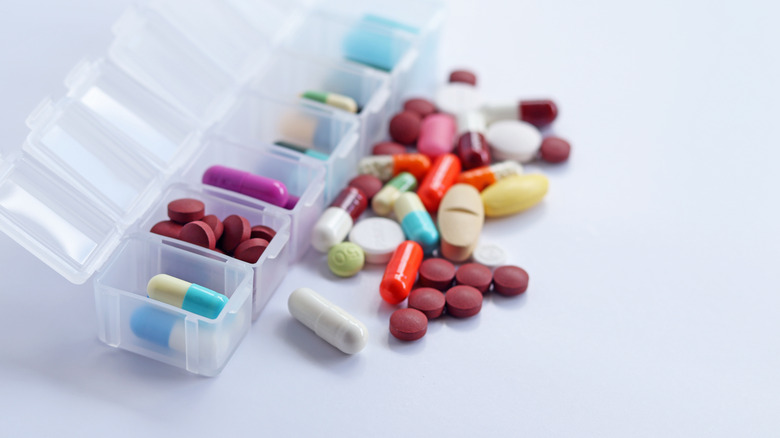Dr. Michael Blaivas Of Anavasi Diagnostics Shares Precautions For Taking Paxlovid For COVID - Exclusive
The COVID-19 pandemic has been a huge learning curve for everyone, from researchers to healthcare providers to ordinary families. New information — and misinformation — about the novel virus seems to emerge at a dizzying speed, and it sometimes feels impossible to keep up with best practices for keeping yourself and those around you safe.
While easily available vaccines have eased the risk of COVID, the virus and its evolving variants continue to circulate, and even those who have been fully vaccinated can still catch the bug. Thankfully, vaccinated people who catch COVID generally experience milder symptoms, and new medications, such as Paxlovid, have been developed to cut short the growth of the virus. But like many medications, Paxlovid must be taken correctly to work. In an exclusive interview, Dr. Michael Blaivas, chief medical officer at Anavasi Diagnostics, described when and how to take Paxlovid and shared some important precautions to bear in mind during and after your course of medication.
Paxlovid only works if taken early after infection
Paxlovid has proven to be effective for reducing the risk of hospitalization and death from COVID. However, it requires a prescription — and even with a prescription, it can be hard to come by. This can be a problem, since Paxlovid should be taken as soon after infection as possible to work effectively. "Paxlovid interferes with the virus's ability to replicate or multiply, preventing the progression from mild to severe disease," Dr. Michael Blaivas explained. "This is why it is important to give the medication early in the disease process."
Paxlovid treatment lasts five days, and because of how the medication works, its effects won't be immediate. Dr. Blaivas advised that some side effects are possible. "You can have some mild side effects from taking Paxlovid, such as muscle aches, diarrhea, and others, but in general, you should start to feel better within a few days," he said. "The main thing is that the patient taking it should not feel worse than before because the disease should not progress to a more severe state."
Paxlovid may not mix with your other medications
An important detail to be aware of is that Paxlovid does not play well with other medications. Indeed, as Dr. Michael Blaivas warned, over 25 medications have been identified as interacting with Paxlovid, so be sure to go over your other medications with your doctor and stop taking any affected ones before you start your Paxlovid treatment. And whatever you do, don't start retaking these right after you finish your last dose of Paxlovid.
"Make sure you give enough time to restart any medications that might interact with Paxlovid," he said. "Patients should check with their doctor when they can restart a medication they were told to stop before taking Paxlovid. Some interactions could be serious, so make sure there is no overlap of those medications and Paxlovid in your body."
How soon can you consider yourself COVID-free after finishing your Paxlovid treatment? Dr. Blaivas said you should test yourself regularly to find out. He recommended "testing after completion of the 5-day course is reasonable, and then repeating in several days if the test is positive at first." This extra testing, he said, can help alert you to a possible rebound infection.
"Most people will not have rebound, and out of those that did have positive tests unexpectedly after treatment, most had no symptoms left. Unless symptoms come back, a negative test after completing treatment should be enough for the majority of cases," he said.
For the latest COVID-19 news, make sure to keep up to date with current guidelines shared by the CDC and WHO. To learn more about the latest industry news related to molecular diagnostics, visit Anavasi's website https://www.anavasidx.com/industry-news.



